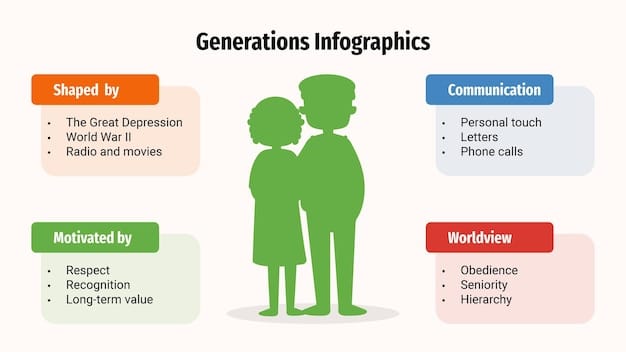FAFSA Changes 2025: Your Guide to Getting More Financial Aid

FAFSA Changes 2025 aim to simplify the application process, expand Pell Grant eligibility, and update income calculations, potentially allowing more students to qualify for increased financial aid for college. Understanding these changes is crucial for families planning their college finances.
Navigating the world of financial aid can feel overwhelming, especially when it comes to the Free Application for Federal Student Aid, or FAFSA Changes 2025. With significant updates on the horizon, understanding these changes is crucial for unlocking potential financial assistance for college.
Understanding the FAFSA Simplification Act
The FAFSA Simplification Act represents a significant overhaul of the federal student aid system. Designed to streamline the application process and expand aid eligibility, this act brings considerable changes that students and families need to understand.
This act endeavors to make financial aid more accessible by reducing the complexity of the FAFSA form, updating needs analysis calculations, and expanding Pell Grant eligibility. These adjustments aim to support more students in their pursuit of higher education.
Key Goals of the Simplification Act
Several key goals underpin the FAFSA Simplification Act, each aiming to improve the financial aid landscape for students. Understanding these goals provides insight into the rationale behind the changes.
- Streamlining the Application Process: Reducing the number of questions and simplifying the language to make the form less intimidating.
- Expanding Pell Grant Eligibility: Updating the eligibility criteria to allow more students to qualify for Pell Grants.
- Updating Needs Analysis: Revising the formulas used to calculate financial need to provide a more accurate assessment.
- Increasing Access to Federal Student Aid: Making financial aid more accessible to traditionally underserved students.
These goals, combined, reflect a broader effort to ensure that financial aid is both easier to access and more equitably distributed, enabling more students to achieve their educational goals.
In summary, the FAFSA Simplification Act is a comprehensive effort to make the financial aid process more accessible and equitable. By streamlining the application, updating needs analysis, and expanding Pell Grant eligibility, this act seeks to support more students in their pursuit of higher education.

Major Changes Coming to FAFSA in 2025
The 2025 FAFSA will introduce several pivotal changes that applicants should be aware of. These modifications are designed to simplify the application process and more accurately reflect a family’s financial situation.
From alterations in the terminology used to changes in how assets are reported, these updates can significantly impact a student’s eligibility for financial aid, making it essential to stay informed.
Key Updates to Expect
Several key updates are coming to the FAFSA in 2025. These updates cover various aspects of the application, from terminology to calculations, each playing a critical role in determining financial aid eligibility.
- Change in Terminology: The term “Expected Family Contribution” (EFC) will be replaced with “Student Aid Index” (SAI).
- Simplified Questions: The number of questions has been reduced, and the language clarified.
- Federal Tax Information: Increased reliance on direct data exchange with the IRS to verify income information.
- Pell Grant Eligibility Expansion: Changes in eligibility criteria to allow more low-income students to qualify.
Understanding each of these updates is critical for accurately completing the FAFSA and maximizing the potential financial aid package. Let’s delve into each of these changes to provide a clearer picture of what to expect.
In conclusion, the major changes coming to the FAFSA in 2025 aim to make the application process more straightforward and equitable. Staying informed about these updates is crucial for students and families looking to secure financial aid for college.
Goodbye EFC, Hello SAI: Understanding the New Student Aid Index
One of the most significant changes in the 2025 FAFSA is the shift from the Expected Family Contribution (EFC) to the Student Aid Index (SAI). This change represents more than just a name; it reflects an updated approach to assessing a family’s ability to contribute to college costs.
Understanding how the SAI differs from the EFC is essential for anticipating how it may affect your financial aid package. Let’s explore the nuances of this transition.
What is the Student Aid Index (SAI)?
The SAI is a new metric used to determine a student’s eligibility for federal student aid. Unlike the EFC, the SAI incorporates a more nuanced assessment of a family’s financial situation, including adjustments for income and assets.
The SAI aims to provide a clearer picture of the resources available to a student, ensuring that aid is distributed more equitably.
Key Differences Between EFC and SAI
Understanding the key differences between the EFC and SAI is crucial for anticipating how these changes might impact your financial aid package. The SAI differs from the EFC in several significant ways.
- Treatment of Income: The SAI places less emphasis on parental income and more emphasis on the student’s income.
- Asset Evaluation: Changes in how assets are considered, potentially benefitting low-income families.
- Pell Grant Eligibility: The SAI directly impacts Pell Grant eligibility, with new criteria for determining need.
- Overall Calculation: The SAI employs a more refined calculation that better reflects a family’s ability to pay.
These differences, in aggregate, represent a more comprehensive and equitable approach to assessing financial need.

In summary, the transition from EFC to SAI represents a significant shift in how financial need is assessed. By understanding the nuances of the new Student Aid Index, students and families can better anticipate their financial aid eligibility and plan accordingly.
How Income and Assets Are Evaluated Under the New FAFSA
The evaluation of income and assets plays a crucial role in determining financial aid eligibility. The 2025 FAFSA introduces changes in how these financial factors are assessed, which can impact the amount of aid a student receives.
Understanding these updated evaluation methods is vital for accurately completing the FAFSA and maximizing potential financial aid.
Changes in Income Assessment
The 2025 FAFSA brings some changes in how income is assessed. These updates include adjustments to how certain types of income are treated and a greater reliance on direct data exchange with the IRS.
These adjustments aim to provide a more accurate and streamlined assessment of a family’s financial situation.
Updates to Asset Evaluation
In addition to changes in income assessment, the 2025 FAFSA also includes updates to how assets are evaluated. These updates can significantly impact a student’s eligibility for financial aid.
Understanding these updates is essential for accurately reporting assets and maximizing aid potential.
Under the new FAFSA, certain assets may be excluded from the calculation, particularly for low-income families. Additionally, the treatment of small businesses and farms may be adjusted to provide more equitable considerations. Furthermore, the FAFSA will now require the applicant and their parents/spouse to report the total amount of assets, which can give the department a better image of the applicant’s or the family’s financial status.
In summary, accurately understanding how income and assets are evaluated under the new FAFSA is essential for maximizing financial aid eligibility. These changes reflect a broader effort to streamline the application process and distribute aid more equitably.
Expanded Pell Grant Eligibility: Who Benefits?
The Pell Grant is a crucial source of financial aid for low-income students, and the 2025 FAFSA includes changes that expand Pell Grant eligibility. These expansions aim to make college more accessible for students with significant financial need.
Understanding who benefits from these changes is essential for families looking to leverage federal aid opportunities.
New Criteria for Pell Grant Eligibility
The 2025 FAFSA introduces new criteria for determining Pell Grant eligibility. These changes aim to support more students, particularly those from low-income backgrounds.
The new criteria include adjustments to income thresholds and need-based assessments, directly impacting who qualifies for aid.
Who Stands to Benefit?
The expanded Pell Grant eligibility aims to benefit a wide range of students. These include:
- Low-Income Students: Those with the greatest financial need are more likely to qualify.
- Students from Underserved Communities: Expanded access for those historically underrepresented in higher education.
- Families with Multiple College Students: Adjusted income considerations for families with more than one child in college.
These targeted benefits aim to create a more equitable landscape for college access.
In conclusion, the expanded Pell Grant eligibility under the 2025 FAFSA represents a significant opportunity for more students to access federal aid. Understanding the new criteria and who stands to benefit can help families maximize their financial aid potential.
Tips for Preparing for the 2025 FAFSA Changes
Preparing for the 2025 FAFSA changes is essential for ensuring a smooth application process and maximizing financial aid eligibility. Students and families can take several proactive steps to prepare effectively.
From gathering necessary documents to understanding the updated requirements, preparation can make a significant difference in the outcome.
Steps to Take Now
Taking proactive steps now can streamline the FAFSA application process and maximize your eligibility for financial aid.
These steps include:
- Gather Necessary Documents: Collect tax returns, W-2 forms, and other financial statements.
- Understand the New Requirements: Familiarize yourself with the changes to the income and asset evaluation.
- Create an FSA ID: Ensure both students and parents have an FSA ID, which is required to complete the FAFSA.
- Attend Financial Aid Workshops: Take advantage of available resources such as workshops and webinars.
In summary, preparing for the 2025 FAFSA changes involves gathering necessary documents and understanding the new requirements. By staying informed and taking proactive steps, students and families can navigate the financial aid process successfully.
| Key Point | Brief Description |
|---|---|
| 💰 New SAI | EFC is replaced by Student Aid Index, changing aid calculations. |
| 📝 Simplified Form | Fewer questions and clearer language to ease application. |
| 🎓 Pell Grant Expansion | More students will qualify due to updated eligibility criteria. |
| ✅ Income Review | Adjustments to income and direct tax data integration. |
Frequently Asked Questions (FAQ)
▼
The main goal is to streamline the application process, expand Pell Grant eligibility, and improve the accuracy of financial aid assessments to help more students access higher education.
▼
The SAI differs by placing less emphasis on parental income, refining asset evaluation, directly impacting Pell Grant eligibility, and employing a more accurate overall calculation.
▼
The FAFSA evaluates both income (tax returns, W-2 forms) and assets (savings, investments), with changes in how they’re assessed to provide a fairer financial picture.
▼
Low-income students, students from underserved communities, and families with multiple college students benefit significantly from the expanded Pell Grant eligibility.
▼
To prepare, gather tax returns, W-2 forms, other financial statements, and familiarize yourself with the updated income and asset evaluation requirements.
Conclusion
In conclusion, the FAFSA Changes 2025 bring vital updates designed to simplify the application process and expand financial aid access. By understanding these changes and preparing accordingly, students and families can maximize their opportunities for college funding.





